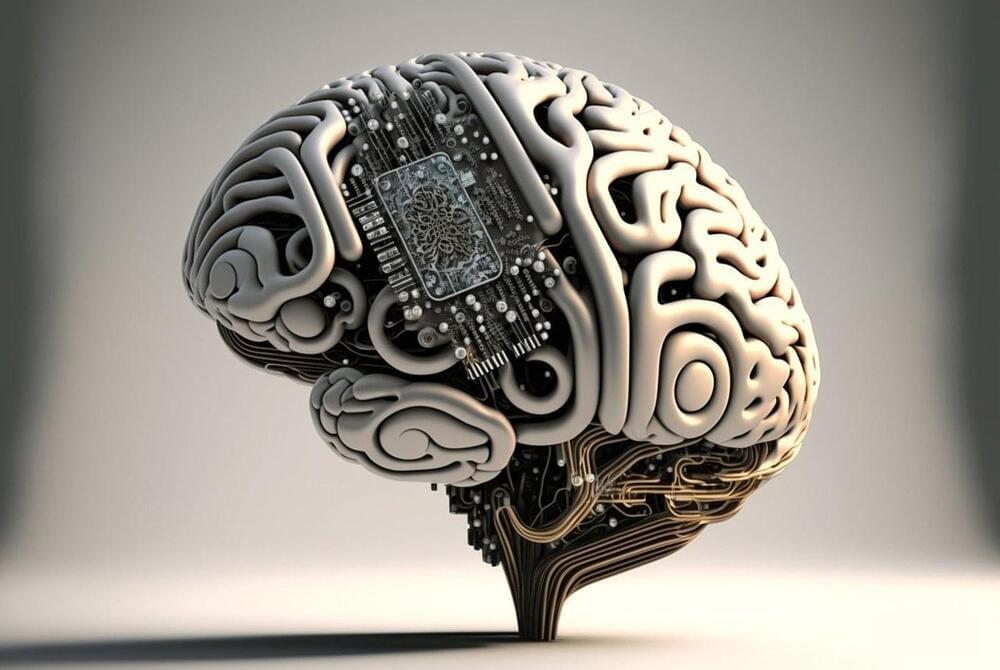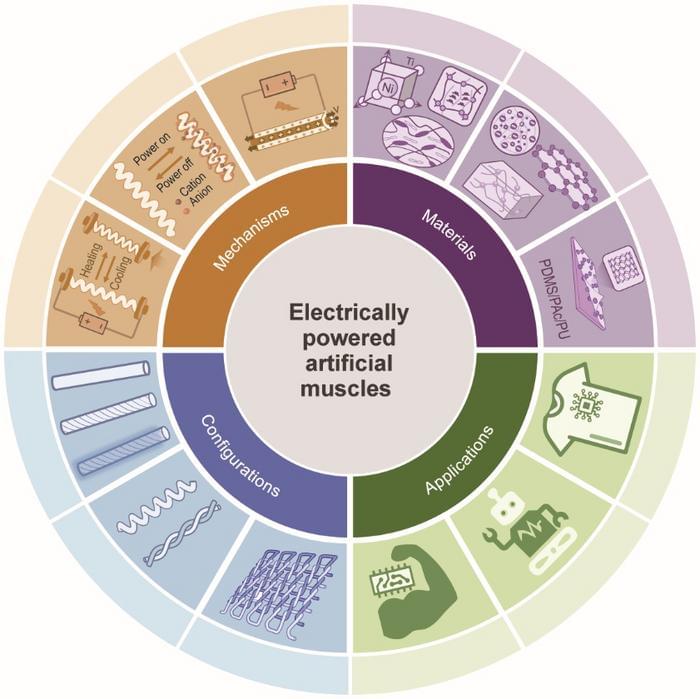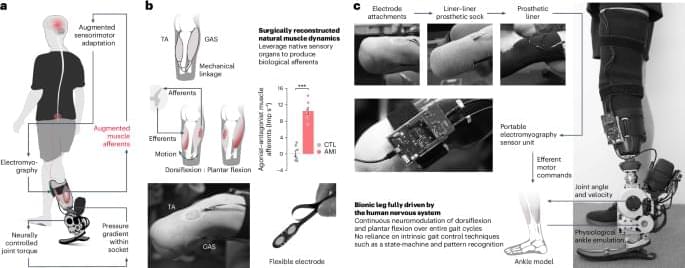Engineers have tried for decades to develop bionic eyes to reverse blindness. But the brain is far more complex than a computer.





Electrically powered artificial muscle fibers (EAMFs) are emerging as a revolutionary power source for advanced robotics and wearable devices. Renowned for their exceptional mechanical properties, integration flexibility, and functional versatility, EAMFs are at the forefront of cutting-edge innovation.
A recent review article on this topic was published online in the National Science Review (“Emerging Innovations in Electrically Powered Artificial Muscle Fibers”).
Schematic of electrically powered artificial muscle fibers categorized from the mechanism, material components, and configurations, as well as their application fields. (Image: Science China Press)

The dramatic advances in efferent neural interfaces over the past decade are remarkable, with cortical signals used to allow paralyzed patients to control the movement of a prosthetic limb or even their own hand. However, this success has thrown into relief, the relative lack of progress in our ability to restore somatosensation to these same patients. Somatosensation, including proprioception, the sense of limb position and movement, plays a crucial role in even basic motor tasks like reaching and walking. Its loss results in crippling deficits. Historical work dating back decades and even centuries has demonstrated that modality-specific sensations can be elicited by activating the central nervous system electrically. Recent work has focused on the challenge of refining these sensations by stimulating the somatosensory cortex (S1) directly. Animals are able to detect particular patterns of stimulation and even associate those patterns with particular sensory cues. Most of this work has involved areas of the somatosensory cortex that mediate the sense of touch. Very little corresponding work has been done for proprioception. Here we describe the effort to develop afferent neural interfaces through spatiotemporally precise intracortical microstimulation (ICMS). We review what is known of the cortical representation of proprioception, and describe recent work in our lab that demonstrates for the first time, that sensations like those of natural proprioception may be evoked by ICMS in S1. These preliminary findings are an important first step to the development of an afferent cortical interface to restore proprioception.
Keywords: Intracortical microstimulation (ICMS); Prosthesis; Somatosensation; Somatosensory cortex.
We often contemplate cyborgs, people enhanced by machines, but what would a civilization built upon cybernetics be like?
Watch my exclusive video Planetary Archives \& Stasis Vaults: https://nebula.tv/videos/isaacarthur–…
Get Nebula using my link for 40% off an annual subscription: https://go.nebula.tv/isaacarthur.
Get a Lifetime Membership to Nebula for only $300: https://go.nebula.tv/lifetime?ref=isa…
Use the link gift.nebula.tv/isaacarthur to give a year of Nebula to a friend for just $30.
Join this channel to get access to perks:
/ @isaacarthursfia.
Visit our Website: http://www.isaacarthur.net.
Join Nebula: https://go.nebula.tv/isaacarthur.
Support us on Patreon: / isaacarthur.
Support us on Subscribestar: https://www.subscribestar.com/isaac-a…
Facebook Group: / 1583992725237264
Reddit: / isaacarthur.
Twitter: / isaac_a_arthur on Twitter and RT our future content.
SFIA Discord Server: / discord.
Credits:
Cyborg Civilizations.
Episode 454a; July 7, 2024
Produced, Written \& Narrated by: Isaac Arthur.
Graphics:
Bryan Versteeg.
Jeremy Jozwik.
Music Courtesy of Epidemic Sound http://epidemicsound.com/creator.
Select imagery/video supplied by Getty Images.
Boost your knowledge in AI and emerging technologies with Brilliant’s engaging courses. Enjoy 30 days free and 20% off a premium subscription at https://brilliant.org/FutureBusinessTech.
In this video, we explore 20 emerging technologies changing our future, including super-intelligent AI companions, radical life extension through biotechnology and gene editing, and programmable matter. We also cover advancements in flying cars, the quantum internet, autonomous AI agents, and other groundbreaking innovations transforming the future.
🎁 5 Free ChatGPT Prompts To Become a Superhuman: https://bit.ly/3Oka9FM
✨ Join This Channel: / @futurebusinesstech.
00:07 Super Intelligent AI Companions.
04:27 Radical Life Extension.
08:40 Programmable Matter.
11:33 Flying Cars.
16:29 Quantum Internet.
20:34 Autonomous AI Agents.
25:21 Hypersonic Aircraft And Missiles.
29:19 Invisibility Suits.
33:45 Human Brain Simulations.
37:02 Synthetic Biology.
40:54 AI-Enabled Warfare.
44:58 Solar Sail Technology.
49:42 Bionic Eyes.
53:20 Swarm Robotics.
56:40 Room-Temperature Superconductors.
01:01:42 Optical Computing.
01:05:59 Graphene Technology.
01:11:01 Artificial Trees.
01:15:07 Web 3.0
01:18:03 Vertical Farming.
💡 Future Business Tech explores AI, emerging technologies, and future technologies.
SUBSCRIBE: https://bit.ly/3geLDGO

In this study we show that residual muscle–tendon afferents enable a person with transtibial amputation to directly neuromodulate biomimetic locomotion, enabling neuroprosthetic adaptations to varying walking speeds, terrains and perturbations. Such versatile and biomimetic gait has not been attainable in contemporary bionic legs without the reliance upon predefined intrinsic control frameworks1,2. Central to the improved neural controllability demonstrated in this study are muscle–tendon sensory organs26,27 that deliver proprioceptive afferents. The surgically reconstructed, agonist–antagonist muscles emulate natural agonistic contraction and antagonistic stretch, thereby generating proprioceptive afferents corresponding to residual muscle movements.
During the ground contact phase of walking, the reconstructed muscle–tendon dynamics of the AMI do not precisely emulate intact biological muscle dynamics. The residual muscles of the AMI contract and stretch freely within the amputated residuum, only pulling against one another and not against the external environment. In distinction, for intact biological limbs, the muscle–tendons span the ankle joint, exerting large forces through an interaction with the external environment. These interactive muscle–tendon dynamics in intact biological limbs are believed to play a critical role in spinal reflexes, in addition to providing feedback for volitional motor control12. Therefore, for this study, the demonstrated capacity of augmented afferents to enable biomimetic gait neuromodulation is surprising given that their total magnitude is largely reduced compared with those of intact biological limbs26,27,45,46.


This fleshy, pink smiling face is made from living human skin cells, and was created as part of an experiment to let robots show emotion.
How would such a living tissue surface, whatever its advantages and disadvantages, attach to the mechanical foundation of a robot’s limb or “face”?
In humans and…
A team of scientists unveiled a robot face covered with a delicate layer of living skin that heals itself and crinkles into a smile in hopes of developing more human-like cyborgs.
The skin was made in a lab at the University of Tokyo from a mixture of human skin cells grown on a collagen model and placed on top of a 3D-printed resin base, the New Scientist reported.
Scientists on the project — who published their findings in Cell Reports Physical Science on Tuesday — believe the living skin could be a key step in creating robots that heal and feel like humans.